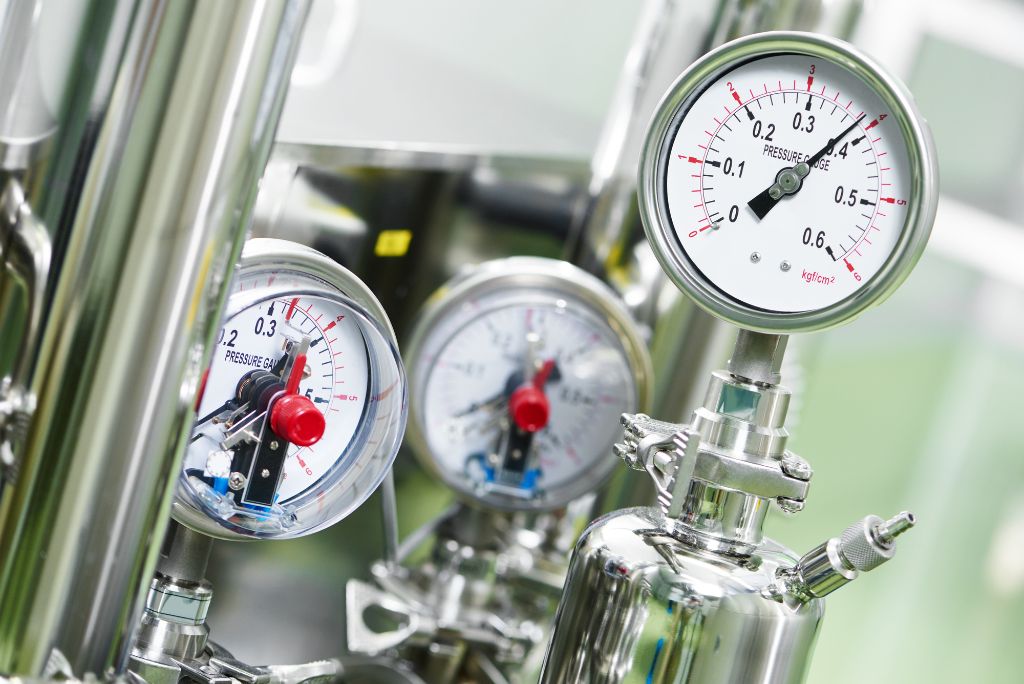Hydrostatic testing or hydro testing is a process in which materials are tested for strength. This testing is mainly done in components such as boilers and piping systems where they are subjected to controlled pressure and observe how they react to the pressure. This process is carried out for many reasons, such as determining whether the materials will withstand the working conditions desired, detecting the presence of leaks, and ensuring that the systems will work properly after installation or after repair.
How Hydro testing works
The material under scrutiny is filled with water, and the air inside is removed. Once it is filled, the pressure of about 1.5 times the pressure limit of the system is applied. This pressure is held constant for a certain period, and the material is observed how it reacts. Engineers can detect small holes/ leaks when bubbles appear. This visual scrutiny can be enhanced by the use of a tracer or fluorescent dyes to the liquid. This pressurized water can breach any gap between imperfectly sealed pipes, thus making it a suitable method of testing seals. The Department of Transportation requires a thorough hydro-testing to be part of the certification process to show that the cargo tank can maintain an airtight seal under pressure at the point of filling or emptying.
It is always essential to seek the services of a qualified professional to carry out this test for you even when you have done this before. Working with a professional will ensure the safety of your staff and customers and save you the considerable cost of purchasing the operating equipment. In the case of pipelines, these tests should be conducted when the line is not in service, mechanically cleaned, and all oil or natural gas vented off completely.
Methods of hydrostatic testing
The standard methods used for this testing include;
• Water Jacket Method
In this method, the equipment under scrutiny is filled with water. Then it is loaded into another vessel referred to as the test jacket, which is packed with water. The equipment is then pressurized within a certain period. As it expands under pressure, it squeezes the water in the water jacket. Water escapes through a glass tube connected to the jacket, which measures the expansion. The equipment is depressurized after the expansion is recorded, from which it shrinks. As this happens, water flows back into the jacket. When the vessel fails to return to its original size, permanent expansion is recorded. The difference between this permanent expansion and the total expansion is calculated to determine whether the equipment is fit for use.
• Proof Pressure Method
Internal pressure is applied to the equipment at the desired values, typically above its intended operating pressure. This method determines whether the equipment has leaks or weaknesses, such as wall thinning that could lead to failure. This method is commonly used in assembly by quality control to ensure that the parts are fit for use before release or fitting.
• Direct Expansion Method
The vessel is filled with a certain amount of water. Pressure is applied then released. The amount of water expelled once pressure is released is recorded. This method gives values similar to those in the water jacket method; the permanent expansion and total expansion values. The percentage difference between the two determines the suitability of the use of the vessel.
Types of Hydro Testing
The two major categories of this testing include traditional and digital hydrostatic testing. The difference is that the traditional equipment is huge and bulky, whereas the digital one is less heavy and accurate since it does not require someone to record the results manually. There is Type I and type II testing; Type I testing is done after construction and determines pressure integrity and whether the welds are intact. Type II testing is used to inspect specific equipment such as tanks and pumps used in underground storage systems.
Hydrotesting is very important for determining the integrity of the equipment. Lack of which could result in catastrophic failures and farfetched losses. Before carrying out a hydro test, it is crucial to consider the effect of the fluid medium on the equipment. Water, for example, is a perfect environment for corrosion. Therefore, make sure your equipment is thoroughly dried and contaminant-free.















